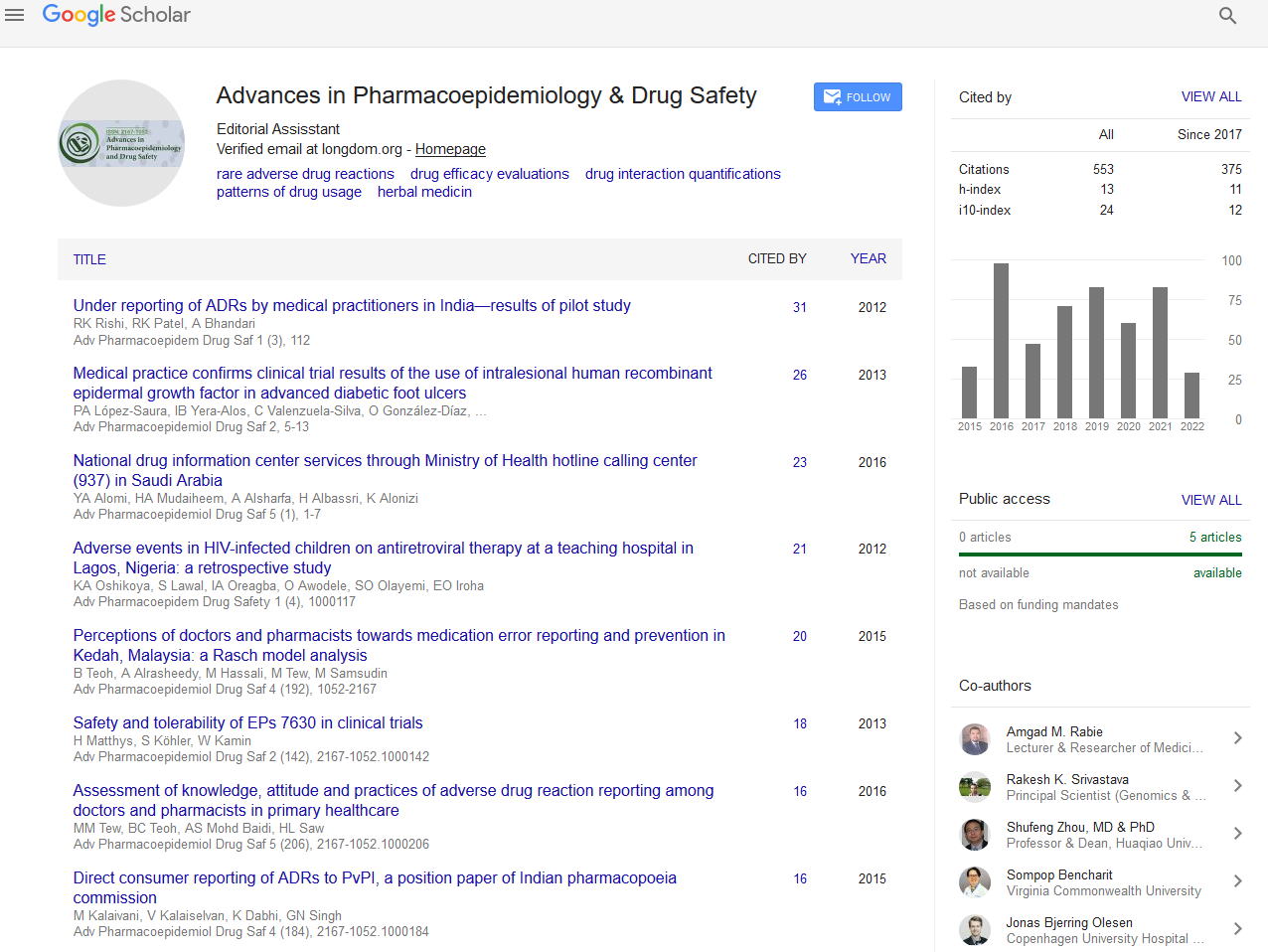Indexed In
- Open J Gate
- Genamics JournalSeek
- Academic Keys
- JournalTOCs
- RefSeek
- Hamdard University
- EBSCO A-Z
- SWB online catalog
- Publons
- Geneva Foundation for Medical Education and Research
- Euro Pub
- Google Scholar
Useful Links
Share This Page
Journal Flyer

Open Access Journals
- Agri and Aquaculture
- Biochemistry
- Bioinformatics & Systems Biology
- Business & Management
- Chemistry
- Clinical Sciences
- Engineering
- Food & Nutrition
- General Science
- Genetics & Molecular Biology
- Immunology & Microbiology
- Medical Sciences
- Neuroscience & Psychology
- Nursing & Health Care
- Pharmaceutical Sciences
Abstract
Adverse Events in HIV- infected Children on Antiretroviral Therapy at a Teaching Hospital in Lagos, Nigeria: A Retrospective Study
Oshikoya KA, Lawal S, Oreagba IA, Awodele O, Olayemi SO, Iroha EO, Ezeaka VC, Temiye EO, Akinsulie AO, Opanuga O, Adeyemo T, Lesi F and Akanmu AS
Background: Highly active antiretroviral therapy (HAART) program requires adequate monitoring of the potential adverse events to the antiretroviral (ARV) drugs. We investigated the ARV drug combinations prescribed for HIV- infected children and their suspected adverse events.
Methods: This is a retrospective and descriptive study involving HIV- infected children less than 15 years old who received treatment at the APIN clinic, Lagos University Teaching Hospital (LUTH) in Nigeria. The case files of 80 patients initiated on HAART, between January 2008 and December 2009, were reviewed. Their demographics, clinical details and medication use, the prescribed HAART regimen, and the suspected clinical and laboratory adverse events were extracted.
Results: The patients were female (46; 57.5%) preponderant with a median age of 3 (IQR: 1.1-6.0) years. Zidovudine- lamivudine- nevirapine (AZT-3TC-NVP) combination (74; 92.5%) was the most frequently prescribed first-line regimen. Thirty three patients changed their first-line HAART to abacavir-lamivudine-lopinavir boosted with ritonavir (ABC-3TC-LVP/r) (11; 33.3%), and zidovudine- lamivudine- abacavir- lopinavir boosted with ritonavir (AZT-3TC-ABC-LVP/r) (8; 24.2%) combinations. Of the 80 patients included in the study, 38(47.7%) experienced 142 adverse events. The most frequently experienced clinical adverse events were nevirapine-induced skin rashes (93; 65.5%), vomiting (19; 13.4%), and pallor (12; 8.5%). Macrocytosis (22/72; 30.6%), anaemia (6/72; 8.3%), and thrombocytopenia (2/72; 2.8%) were the commonest haematological adverse events associated with zidovudine.
Conclusions: The HAART regimens used for HIV-infected children in this study have a good safety profile. Their few adverse events suggest a need for prospective pharmacovigilance to effectively monitor the toxicities of ARV drugs.


